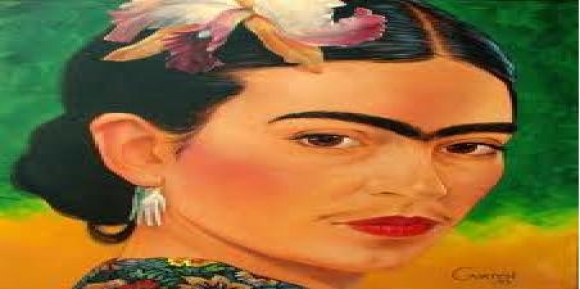Frida Kahlo & Diego Rivera: Masterpieces of the Jacques & Natasha Gelman Collection
Published: Thursday, May 05, 2011

6 April - 26 June 2001, Irish Museum of Modern Art, New Galleries.
Whatever you think of Frida Kahlo (1907-1954), you cannot deny her colourful and rich embrace of life, politics, science, psychology and art. Here was a woman very much alive and ahead of her time. Having originally planned to be a doctor, Frida began painting while she was bed bound recovering from a tram accident. This and a spinal illness meant that she experienced a huge amount of physical pain throughout her life. However, Frida was not a victim she was very much a survivor, and through her work she explores the human condition and all its contradictions, what it is to be vulnerable and powerful; to be loved and betrayed; to be strong and weak. She does this by portraying herself in her art in many different roles, including goddess, seductress, teacher, mother, student, patient, and animal.
Frida's work is mainly subjective, over a third of her paintings are self-portraits, often depicting herself as a Tehuana woman, this she did as a political statement to demonstrate her solidarity with Indian people. Fascinated by philosophy and world religions she uses iconography from Hinduism, Buddhism, and Catholicism as well as symbolism from the Mexicanidad movement (influenced by indigenous people and arts) and the iconography of Mexican ex-voto painters (focusing on divine intervention), and reproduces her own face, body, and feelings to express what are often the unspoken aspects of a life, the intimate, and sometimes darker, shadow sides of the self.
Often seen as a feminist icon because of her diverse portrayal of womanhood; and because of her challenge to gender boundaries, through her lifestyle, relationships and art. She has also been called a Surrealist, a label she herself rejected as she said she did not paint her dreams, but her life, that which really existed for her.
When I first encountered Frida's paintings I was struck by the lively colours and the assuredness of her brushstrokes. The paint seems almost wet, as if she has just stepped away from the canvas, with her easel and paints still in her hand. This energy in the paintings brings them alive for the viewer, whatever you do, you cannot, indeed must not ignore Frida. Her gaze follows you around the gallery, sharing some intimate detail from her life or calling you to unravel the mystery of her work.
I highly recommend this exhibition, although small, and mixed with the work of her husband, Diego Rivera (1886-1957) it is a rare opportunity to see some of Frida's paintings, here in Dublin. Last summer I went to see the Frida Kahlo Retrospective in Berlin. For the first two days I couldn't get into the exhibition because there was a seven-hour long queue around the gallery. On the third day I thought I would beat the crowds by getting there at 6am. I was still number 100 in the queue! What a surprise, I hadn't fully appreciated the adoration Frida elicits from fans from all around the world. So, when the exhibition opened here I was keen to get there before the same thing happened. During my first visit the IMMA workers told me they were unprepared for the popularity of the exhibition and didn't have any postcards or posters of Frida's work available in the Gallery Shop. On my second visit two weeks later, the Gallery was packed and the shop was full of Frida memorabilia. Seeing Frida's paintings uplifts the human spirit and makes you feel good to be alive. She was a talented and courageous woman and artist, who truly feasted on her own life.
Written by Shirley Graham of Hanna's House, 29 April 2011.
Click here for more information on Hanna's House.
